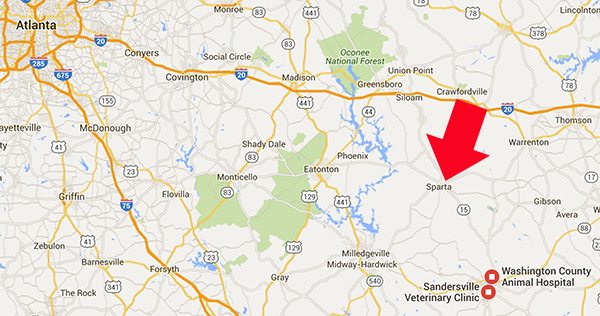When Tigers Kill Keepers
There are only 2 Reasons Why Zoo Keepers Are Killed by Tigers
- There has been a failure in the safety measures to keep tigers and zoo keepers apart, or
- The zoo keeper doesn’t understand their relationship with tigers or any other big cat.
There is a lot that can go wrong, from failing latches, to not having a clear line of sight between the cat and keeper to the mishaps that are caused by a keeper purposely entering the cats’ space. Even if the cats are not killed, for doing what comes naturally, they are doomed to life in prison.
Night Houses seem to often be part of the human / big cat mauling or killing scenario and maybe it is because it is such a cruel practice. Cats are most active at night, but for liability reasons are shut in prison-like, windowless, cells by zoos when they are closed. The cats hate it, so they have to withhold food to force them in at night.
Big Cat Rescue does not lock cats up at night and thanks to our mild climate in Florida, does not utilize any sort of indoor housing for the big cats. Because there are no solid walls or doors, the keepers at Big Cat Rescue can always see where the cat is before approaching the enclosure. Caregivers at the sanctuary do not enter the enclosures of any big cat, unless that cat is safely locked into another portion of the cage by the CEO or President and the Operations Manager.
Exotic cats are spectacularly intelligent creatures and have years to plot their escape or revenge.
The second reason keepers are killed by big cats is that they think they are “tiger whisperers” or they think they have some super natural bond with apex predators that makes them special. Anyone who espouses such nonsense shouldn’t be allowed anywhere near a captive big cat, because they clearly do not understand exotic cats. It is just a matter of time before it ends in tragedy.
 Cats in cages may be solicitous of their owners or keepers, but that’s because they have to beg for everything. It’s sad to see it, when you think about how majestic these animals are meant to be. Humans mistake their temporary power, ensured by the strength of the cage, for having a bond or relationship with the big cat. Tigers have their own agenda and it doesn’t include pleasing people. Some may not be overtly nasty about it, but given a choice will escape and never look back.
Cats in cages may be solicitous of their owners or keepers, but that’s because they have to beg for everything. It’s sad to see it, when you think about how majestic these animals are meant to be. Humans mistake their temporary power, ensured by the strength of the cage, for having a bond or relationship with the big cat. Tigers have their own agenda and it doesn’t include pleasing people. Some may not be overtly nasty about it, but given a choice will escape and never look back.
At Big Cat Rescue our caregivers are trained to feed and clean small cats, like bobcats, servals, caracals and lynx for 6 months before they can graduate to cougars. We are a NO TOUCH facility; no, not even their fingertips, may touch the cats! If they prove themselves trustworthy around the smaller cats, they can graduate to cougar keeping. They are with us about two years before they are even allowed to be in the sections where lions, tigers and leopards are housed. That two year process allows us ample time to weed out the delusional people who think they could get away with touching a big cat and live to tell about it.
More Resources on the Captive Big Cat Issues
Just like the better zoos are accredited by AZA, the better sanctuaries are accredited by GFAS. https://SanctuaryFederation.org
These are the big cat standards for GFAS: https://www.sanctuaryfederation.org/gfas/wp-content/uploads/2016/01/FelidStandardsJuly2013HA.pdf
The state of Florida does not allow contact with big cats over 40 lbs., but may have some exemption for employees. https://myfwc.com/license/captive-wildlife/

USDA has enforced actions against facilities that allowed public contact with big cat cubs over the age of 12 weeks, as they can take off a finger at that age and just recently announced they will cite facilities for pimping out cubs under the age of 4 weeks. AZA zoos don’t do that, but there are plenty of backyard breeders that do. https://www.aphis.usda.gov/animal_welfare/downloads/big_cat/big_cat_q&a.pdf
April 3, 2016 USDA cracks down on abuse of cubs under the age of four weeks. In response to a 2012 legal petition filed by The Humane Society of the United States, World Wildlife Fund, Detroit Zoological Society, International Fund for Animal Welfare, Born Free USA, Big Cat Rescue, Fund for Animals and Global Federation of Animal Sanctuaries, theU.S. Department of Agriculture issued guidance making clear that exhibitors violate the Animal Welfare Act by allowing members of the public to handle or feed infant exotic cats like tigers, lions, cheetahs, jaguars or leopards. Read more.
April 5, 2016 USFWS announced that they are rescinding the generic tiger loophole. Big Cat Rescue has been pressuring the USFWS since at least 2007 to rescind this loophole and on 8/22/11 after a meeting with the USFWS the Generic Tiger issue was published to the Federal Register for public comment and got over 15,000 comments in support of our request to ban the breeding of non purebred tigers. Read more.
Big Cat Rescue has been pressuring the USDA since the 90’s and USFWS since at least 2007 to end cub handling and rescind the generic tiger loophole and on 8/22/11 after a meeting with the USFWS the Generic Tiger issue was published to the Federal Register for public comment and got over 15,000 comments in support of our request to ban the breeding of non purebred tigers. According to their Q&A it sounds like the USFWS may still rubber stamp activities that really don’t help tiger conservation, but it’s a step. USDA only banned the contact with cubs under four weeks, but that is a step too.
So What Can You Do to Stop the Abuse and the Killings and Maulings?
As long as big cats are privately owned and used as photo and ego props, the fantasy that they can be handled safely will prevail and accidents will continue to happen.
Regulations can’t work, because USDA and USFWS don’t have the resources nor apparently the will to enforce the weak rules they have, so that is why we need an all out ban on the private possession of big cats. You can help get that done at https://BigCatAct.com





